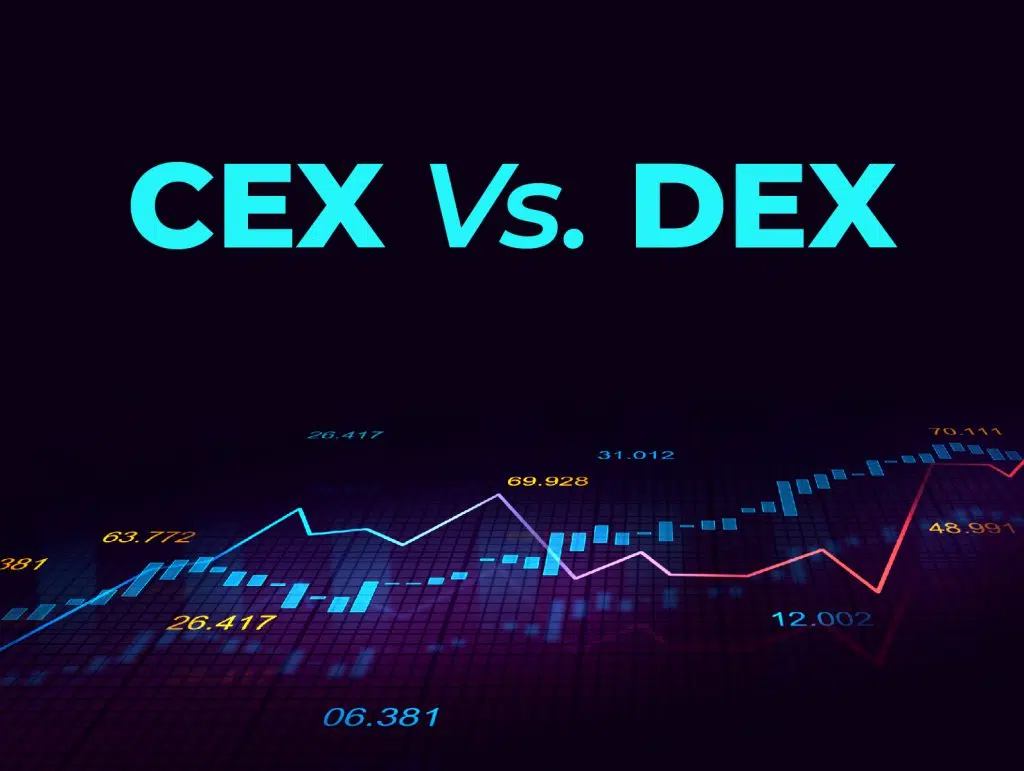
Today we are going to talk about What Are The Difference Between In A CEX And DEX?
The whole crypto market remembers very well the collapse of one of the largest exchanges (FTX), which gave a lot of doubt to CeFi and showed the real picture of what can happen to your funds stored on CEX exchanges. In turn, the DeFi sector, the popularity of which is only increasing, never ceases to amaze the number of new projects and technological solutions. And DEX’s are attracting more and more new users, providing the desired security and control of funds.
CEX (Centralized Exchange) – is an exchange that uses an intermediary to facilitate transactions between buyers and sellers. DEX (Decentralized Exchange) has no other intermediaries, which fundamentally changes the way it works.
It would be incorrect to distinguish them into “black and white”. Each has advantages and disadvantages. Let’s analyze them below.
1. Custodiality
When you trade on CEX you keep your funds in a wallet tied to the exchange itself, not your own. The important thing is that the exchange keeps the private keys to your wallets with itself, and you get the login credentials to the platform. The expression “not your keys, not your coins” epitomizes centralized exchanges.
To trade on DEX, all you have to do is link your wallet. There is no deposit required, increasing security for the user.
2. Liquidity
The volumes on centralized exchanges are many times higher than their decentralized counterparts. This can be explained by the fact that the primary action of newcomers to crypto is registration on the exchange. And because of the popularity of CEXs, most come to them, providing high liquidity.
This is also influenced by the following criterion, which attracts a large number of users.
3. Functionality
Futures trading, spot-trading, leverage, lunchpads, etc. All this is about centralized exchanges. Their trading functionality is much broader. At this stage of development most DEX are more like swap meets than full-fledged exchanges. As an exception, we can highlight 1 inch, which has the ability to place orders.
4. KYC – know your client
The most important difference is the presence of verification. Most DEX do not follow KYC standards. The principle of autonomous operation frees them from worries about verification of the client. Centralized exchanges can not boast of this.
Unfortunately, recently there is an unhealthy trend of introducing verification in the DeFi segment. So, the well-known exchange dYdX has resorted to KYC verification, attacking the sacred principles of decentralization.
5. The mechanism of trade implementation
CEX uses the traditional order book model to find buyers and sellers. At the same time, the DEX exchanges use a completely different execution system, called AMM.
The AMM model is based on a liquidity pool that holds two tokens at a 50/50 ratio. When a user makes a trade, the smart contract automatically sends the tokens to the pool and then exchanges them for a similar token from the pair. The exchange ratio between the tokens is calculated automatically.
Bottom line: it’s clear that DEX has a long way to go. With CEX, users can focus on trading and leave all other aspects of the exchange to the company. However, you have to pay for this by providing your assets for safekeeping. DEX offers more freedom and potentially better terms – though it may require a more knowledgeable user.
JPMorgan’s recent statement: “DEX exchanges will not be able to compete with CEX, despite the collapse of FTX.”


